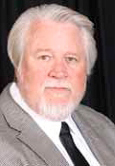|
|
PROFILES

|
|
Freddie
J. Hensley
|
Mr. Hensley has a long and distinguished
background in petroleum engineering, prospect generating,
along with management of oil and gas exploration and
production activities. Mr. Hensley received a Bachelor of
Science and Masters of Science degree in Petroleum
Engineering from Tulsa University in 1969, which served as
his primary entry into the oil and gas business. Since 2004,
as President and Co founder of H-Petro-R, Inc. (HPR) in
addition to overall management, Mr. Hensley’s focus has been
on regional field studies and the generation of quality oil
and gas prospects.
Since 2003 Mr. Hensley has developed regional studies in
Seminole County, Oklahoma to delineate Wilcox Sand prospects
by employing the latest 3-D seismic technology. The Wilcox
reservoirs are the primary reservoirs of the Greater
Seminole Producing Province that has produced over 1 billion
barrels of oil since the early field discoveries of the
1920's and 1930’s.
Recently Mr. Hensley has also been engaged in evaluating the
deep gas reservoirs of the Anadarko Basin. His consulting
company, Hensley Petroleum Consultants, Inc. (HPC) performed
studies covering Beckham, Caddo, Rogers Mills, Custer, and
Washita counties of Oklahoma, and Hemphill and Wheeler
counties in Texas.
On occasion, Mr. Hensley serves as an expert witness at the
Oklahoma Corporation Commission, State and Federal court
cases, as a reservoir engineering specialist. In addition,
Mr. Hensley has managed a small independent exploration and
production company that included thirty (30) operated wells
and has interests in another 50 outside operated wells.
During 2001, 2002, and part of 2003 Mr. Hensley served as an
expert advisor in a regional study of the Ardmore Basin for
prospects in the prolific Simpson Series reservoirs. The
application of 3-D seismic technology was used in prospect
definition. This resulted in a recent discovery well that is
currently producing 200 Bbls of oil and 3 million cubic feet
of gas with several more wells planned.
From 1989 to 2004, Mr. Hensley served as President of his
consulting firm, Hensley Petroleum Consultants, Inc. (HPC).
During this period, Mr. Hensley served as an adviser to
MCNIC Energy on exploration and production investment
opportunities. Mr. Hensley also organized and evaluated the
MCNIC Mid-continent and Permian Basin properties that were
the subject of a $500 to $800 million dollar divestment. In
addition Mr. Hensley was retained by a Tulsa consulting
company to aid in the secondary/enhanced oil recovery
studies of three fields in Western Pakistan.
Hensley Petroleum Consultants, Inc. also conducted
geological and reservoir engineering studies to develop
operational business plans on several existing oil fields in
the former Republics of the U.S.S.R.(FSU), and present
associated economics. The initial assignment was in
Kyrgyzstan where 14 fields were the subject of study.
Hensley Petroleum Consultants, Inc. developed the total
business plan to invest a minimum of $25 million dollars in
oil and gas production and exploration projects, and the
installation and operations of a 50,000 barrels a day crude
oil refinery.
In early 1982, Mr. Hensley, as president of Hensley
Petroleum Resources, Inc., developed and leased his own
prospects which were sold to "key operators”. Through 1985
more than fifty (50) wells were drilled and completed in the
Mustang-Tuttle area of Oklahoma as a result of Mr. Hensley's
geology and exploration ideas. The exploration activity in
the Mustang-Tuttle area maintained a 95% success ratio. As a
result of his employment with Ratliff (see below) and the
drilling success of the Mustang-Tuttle area Mr. Hensley had
interests in approximately 110 wells. During this period Mr.
Hensley continued working as an independent operator,
developing and exploring for oil and gas reserves. His
efforts resulted in limited success due to the downturn of
the petroleum industry. Mr. Hensley concentrated on the
development of natural gas reserves during this time and
consequently performed several major studies in the Anadarko
and Arkoma Basins of Oklahoma.
From 1979 to 1982 Mr. Hensley was associated with Ratliff
Exploration Company. Starting as Manager of Engineering, he
was promoted after one year to Vice President of Exploration
and Production, responsible for coordinating all of the
company’s exploration and production activity. Mr. Hensley
negotiated the purchase of oil and gas leases from the Will
Rogers Airport Trust and drilled 50 wells during the initial
field development. The Will Rogers Airport (Wheatland) Field
is considered a major find, and the subsequent owners (TXO)
drilled an additional 56 wells, ultimately selling the field
to Marathon Oil Company. Marathon proceeded with further
development in which they drilled and additional sixteen
(16) wells and implemented a secondary recovery waterflood
project. The development phase of this field yielded
approximately a 90% success ratio on completions in the
drilling of more than 100 wells. To date this field has
recovered in excess of ten million barrels (10,000,000) of
oil and 75 billion cubic feet of gas. At today’s oil and gas
prices, this type of produced oil and gas reserves would
generate a product value of $1,300,000,000.
From 1971 to 1979, Mr. Hensley held various positions in
reservoir engineering with Skelly Oil Company in Tulsa,
Oklahoma. Mr. Hensley developed plans of operation for the
waterflood properties operated by Skelly. In particular, he
developed the gas injection and waterflood plan of operation
for the Vess Unit (Velma Sims Sand Unit), Stephens County,
Oklahoma. This unit contributed approximately 75% of
Skelly's total company profits. Full scale crestal gas
injection and waterflood operations took the Vess Unit from
less than 15,000 barrels of oil per day to a peak oil
producing rate over 32,000 barrels of oil per day. Under the
recommendation of Mr. Hensley a computerized automation
system was installed in the Vess Unit to implement a
field-wide waterflood monitoring program. Mr. Hensley was
chosen to initiate evaluations of tertiary recovery
processes for the Vess Unit. The Vess Unit had an estimated
728 million barrel of oil in place. During his tenure in the
Oklahoma City District he was chosen to report to the
Executive Vice President of Exploration and Production in
resolving special reservoir engineering problems within
Skelly organization.
At the age of 29, Mr. Hensley was promoted to District
Reservoir Engineer in the Midland District. In his new
position he supervised eight reservoir engineers and five
support personnel. Mr. Hensley was in charge of finalizing
the district plans of operation on several thousand
properties throughout the Permian Basin region at an
estimated annual budget of $50 million. Included were twenty
two Skelly operated active waterfloods. After one year in
the Midland District Mr. Hensley was transferred to the
Duncan District Office (previously the Oklahoma City
District) as district reservoir engineer to take charge of
developing and implementing waterflood plans on several
Skelly operated properties in southern Oklahoma. Mr. Hensley
supervised a staff of twelve and continued to be in charge
of developing District Budget plans in the range of $15 to
$20 million annually for exploration and production
projects. This assignment included a continuation of the
studies of a tertiary recovery process for the Vess Unit.
During a two-year assignment as district reservoir engineer,
the Duncan District realized an increase of forty five
hundred (4,500) barrels of oil per day and eighteen (18)
million MCF per day by implementing optimum plans of
operations, originating from Mr. Hensley's staff, within the
mid-continent region.
Shell Oil Company in Midland, Texas where he worked until
1971. In the Shell organization his entry position Mr.
Hensley had begun his career in the petroleum industry in
1969 as a petroleum engineer with was an exploitation
engineer. The job functions were primarily the evaluation of
drilling and work over proposals from the production
geologists. This involved AFE preparation, reserve and
economic evaluations, well-site geology, well-site
engineering of coring and testing (DST) procedures, well
logging, and preparation of completion prognoses.
Approximately 75% of these job responsibilities involved
time in the field supervising drilling and completion
operations. After one year as an exploitation engineer Mr.
Hensley was promoted to an operations engineer. This job
required that he develop workover recommendations for the
wells in the Denver Unit, Wasson (San Andres) Field, Yoakum
County, Texas. The Denver Unit was a mature waterflood, with
several thousand wells, that was experiencing a substantial
increased density drilling program and was in the initial
stages of evaluation of tertiary recovery processes.
|
|
|



























